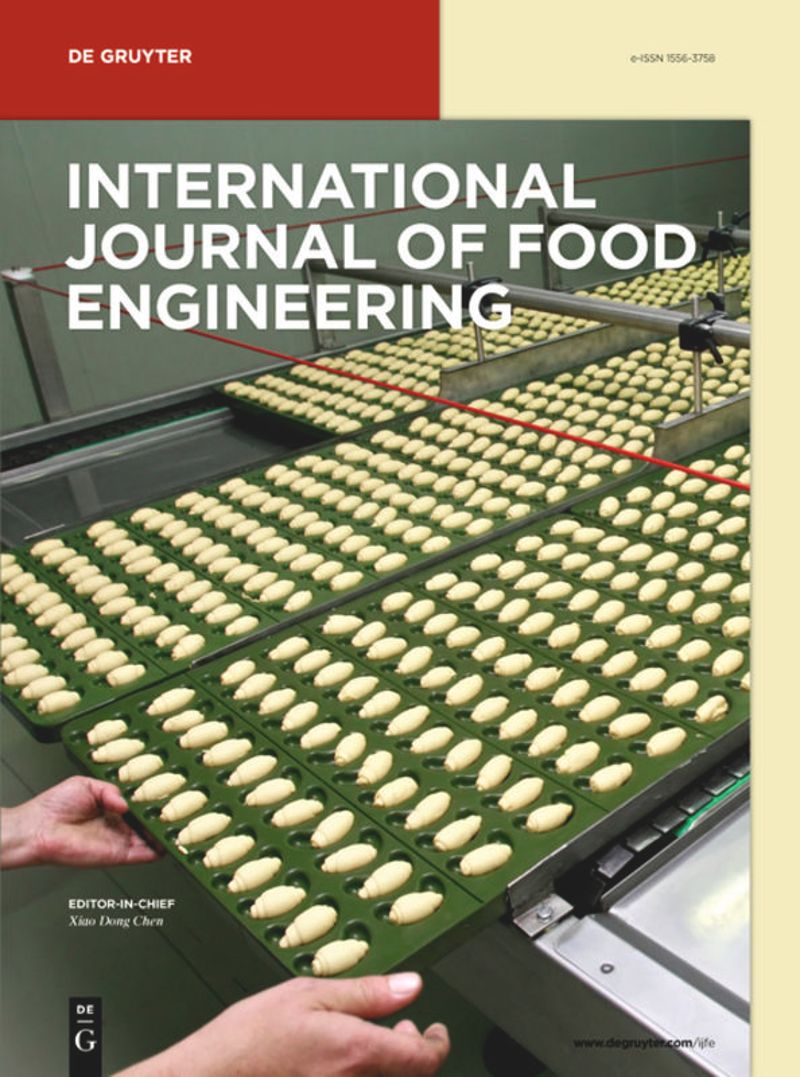Freezing and regeneration characteristics of incompletely gelatinized potato starch gels
IF 1.4
4区 农林科学
引用次数: 1
Abstract
Abstract In this paper, the quick freezing characteristics of incomplete gelatinized potato starch gels with 8 % concentration and its regeneration characteristics were studied. The results showed that the glass transition temperatures of the gel was −4.87 °C. The content of free water (T24) in the gel decreased gradually during the quick-freezing process, but was still relatively high (80.18 %) when the central temperature reached −3 °C. The gel had not frozen on a large scale at central temperature −3 °C. The gel showed the highese gel strength (60.25 g) and the highest crystallinity (17.24 %) when aged at a low temperature (−3 °C) for 3 days and the gel strength increased with the decrease of storage temperature during aged at −3 °C to 3 °C. Scanning electron microscopy showed that the gel network was relatively intact when the gel stored at −3 °C for 1 day to 3 days.不完全糊化马铃薯淀粉凝胶的冷冻和再生特性
摘要本文研究了浓度为8 %的不完全糊化马铃薯淀粉凝胶的速冻特性及其再生特性。结果表明,凝胶的玻璃化转变温度为- 4.87 °C。凝胶中游离水(T24)含量在速冻过程中逐渐降低,但当中心温度达到−3 ℃时,游离水含量仍然较高(80.18 %)。凝胶在中心温度- 3 °C下没有大规模冻结。低温(- 3 °C)陈化3 天,凝胶强度最高(60.25 g),结晶度最高(17.24 %),在- 3 °C ~ 3 °C陈化期间,凝胶强度随贮藏温度的降低而增大。扫描电镜显示,凝胶在−3 °C保存1 ~ 3 天时,凝胶网络相对完整。
本文章由计算机程序翻译,如有差异,请以英文原文为准。
求助全文
约1分钟内获得全文
求助全文
来源期刊
CiteScore
3.20
自引率
0.00%
发文量
52
审稿时长
3.8 months
期刊介绍:
International Journal of Food Engineering is devoted to engineering disciplines related to processing foods. The areas of interest include heat, mass transfer and fluid flow in food processing; food microstructure development and characterization; application of artificial intelligence in food engineering research and in industry; food biotechnology; and mathematical modeling and software development for food processing purposes. Authors and editors come from top engineering programs around the world: the U.S., Canada, the U.K., and Western Europe, but also South America, Asia, Africa, and the Middle East.

 求助内容:
求助内容: 应助结果提醒方式:
应助结果提醒方式:


